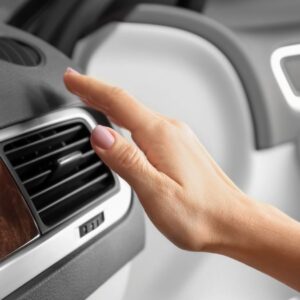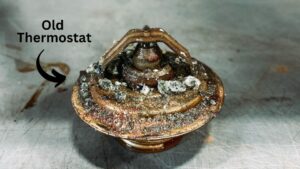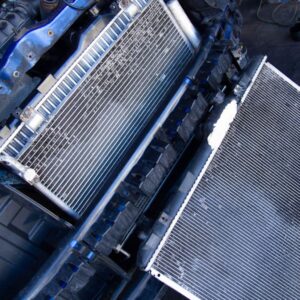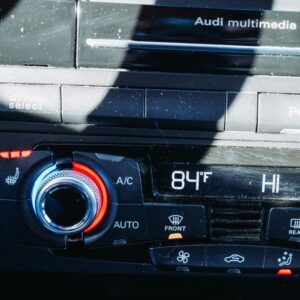Why Doesn’t the Heat Work in My Car?
Picture this: it’s the first icy morning of winter, and you eagerly turn the knob to warm up your car, only to find the heater refusing to cooperate. You’re left shivering, asking yourself why this essential feature isn’t working when you need it the most. The answer goes beyond mere comfort; your car’s heat is a lifeline in winter driving. It’s not just about staying warm; it’s about ensuring your safety on frosty roads, keeping windows defrosted and visibility high. Keeping you from shivering and focusing on the road. There are many different reasons why your heat may not be working. All possibilities will seem to have similar signs and symptoms, so at the end of the day, it is best to bring your vehicle to a professional to diagnose exactly what is wrong. Let’s unravel the mystery together and explore why your heat is broken.

Low Coolant Level
Insufficient coolant in your car’s system can prevent the heater core from getting hot enough to produce warm air. Check the coolant level in the radiator and top it off if it’s low. Never add coolant to a hot engine. The pressure builds when your vehicle is hot and it can cause serious burns when opened. Here are some reasons for why your coolant levels may be low:
- Leaking Radiator: A leak in the radiator can cause coolant to seep out, leading to a low coolant level. Inspect the radiator for signs of corrosion, cracks, or visible leaks.
- Leaking Hoses: The hoses that carry coolant throughout your engine can develop cracks or holes over time, causing coolant to leak out. Check all hoses for signs of wear and tear.
- Leaking Water Pump: The water pump circulates coolant through the engine and radiator. If the water pump is faulty or has a leaking gasket, it can result in coolant leaks.
- Faulty Radiator Cap: A damaged or loose radiator cap can cause coolant to overflow or leak. The cap maintains the pressure in the cooling system and prevents coolant from escaping.
- Internal Engine Leaks: Internal engine issues such as a blown head gasket can allow coolant to mix with the engine oil, leading to a decrease in coolant level. This situation is often indicated by a milky or frothy appearance in the oil on the dipstick.
- Coolant Evaporation: In some cases, small amounts of coolant can evaporate over time. While this is a natural process, a significant loss of coolant due to evaporation may indicate a problem with the radiator cap or the pressure in the cooling system.
- Overheating: If your engine overheats, it can cause the coolant to boil and evaporate, leading to a drop in coolant level. Overheating can be caused by issues such as a malfunctioning thermostat, a faulty radiator fan, or a clogged radiator.
- Coolant System Bleeding: If the coolant system was recently serviced or if air was introduced into the system, improper bleeding or air pockets can cause a low coolant level. Properly bleeding the cooling system after coolant replacement is crucial to prevent this issue.
Faulty Thermostat
The thermostat regulates the flow of coolant through the engine and the heater core. If it’s stuck open, the engine may never reach the optimal temperature for producing warm air. Replacing a faulty thermostat could solve the problem. The main purpose of the thermostat is to regulate the operating temperature of your engine. When a thermostat in your vehicle is failing or needs replacement, several noticeable signs and symptoms may arise. Here are some common indicators that your thermostat might be problematic:
- Engine Overheating: One of the most obvious signs of a faulty thermostat is engine overheating. If the thermostat is stuck closed, it will block the flow of coolant to the radiator, causing the engine temperature to rise excessively.
- Low Engine Temperature: Conversely, if the thermostat is stuck open, the engine may never reach its optimal operating temperature. This can result in poor fuel efficiency, increased emissions, and decreased engine performance.
- Fluctuating Temperature Gauge: If you notice the temperature gauge on your dashboard fluctuating between hot and cold unexpectedly, it could be a sign of a malfunctioning thermostat.
- Inadequate Heat from the Heater: If the thermostat is stuck open, the engine may not get hot enough to provide sufficient heat for the interior of your vehicle. You might notice lukewarm or cool air coming from the heater, especially in colder weather.
- Coolant Leaks: A faulty thermostat can cause the engine to overheat, leading to increased pressure within the cooling system. This excess pressure can cause leaks in the hoses, radiator, or even the thermostat housing itself.
- Rapid Changes in Engine Temperature: If you observe rapid fluctuations in the engine temperature, it could indicate that the thermostat is opening and closing irregularly, disrupting the normal flow of coolant.
- Check Engine Light: In some vehicles, a malfunctioning thermostat can trigger the check engine light on your dashboard. This occurs when the engine temperature or coolant sensor detects unusual temperature variations.

Heater Core Issues
The heater core is like a small radiator inside your dashboard. If it’s clogged or leaking, it can’t warm the air properly. A clogged heater core might need to be flushed, while a leaking one might require replacement. Here are some signs of a misfunctioning heater core:
- Insufficient Heat: Inadequate warmth despite the heater being on.
- Foggy Windows: Interior windows fogging up due to lack of proper heating.
- Sweet Smell: A sweet, syrup-like smell inside the car, indicating coolant leakage.
- Dampness: Wet carpets or floorboards due to leaking coolant.
- Coolant Odor: Smelling coolant inside the vehicle, suggesting a leak in the heater core.
- Coolant Puddles: Finding puddles of coolant under the dashboard area or passenger side footwell.
Faulty Blower Motor or Resistor
If the blower motor isn’t working or the resistor that controls the fan speeds is faulty, you may not feel any air coming through the vents, or it might not be at the desired temperature. Here are some signs of a faulty blower or resistor in your vehicle:
- No Airflow: Lack of air from vents.
- Inconsistent Airflow: Fan works at some speeds but not others.
- Limited Airflow: Weaker airflow than usual.
- Loud Noises: Unusual sounds from the dashboard area.
- Fan Stuck on One Speed: Operates only at a constant speed.
- Intermittent Operation: Fan works on and off without reason.
- Burning Smell: Smell of burning when the heater is on.
Radiator Issues

If the radiator is clogged or not functioning properly, the engine might not generate enough heat, affecting the car’s ability to produce warm air. Here are some signs/symptoms of a radiator issue in your vehicle:
- Engine Overheating
- Coolant Leaks
- Low Coolant Levels
- Discolored Coolant
- Radiator Fins Damage
- Steam or White Smoke
- Inconsistent Temperature Gauge
- Air Conditioning Problems
Let a Professional See Your Vehicle
Consulting a professional is essential because various issues related to your vehicle’s heating system can manifest similar warning signs, making it challenging for an inexperienced individual to diagnose accurately. A skilled mechanic can conduct a comprehensive assessment, identify the specific problem, and perform precise repairs. In the end, a professional can save you tons of money because they can diagnose the issue the first time. Their expertise ensures that all components, whether related to the radiator or other heating system elements, are diagnosed and fixed correctly, restoring your vehicle’s heat to optimal functionality and ensuring your safety and comfort on the road.
When the chill of winter sets in and your vehicle’s heat fails to provide the warmth and comfort you need, there’s no need to endure the cold discomfort any longer. At Auto Care Plus, our team of professional ASE Master Technicians are here to help. With our expertise and state-of-the-art diagnostics, we can pinpoint the exact reason why your vehicle’s heating system isn’t working as it should. Don’t compromise your safety and comfort on the road; bring your vehicle to us, and let us restore the warmth to your drives. Trust us to diagnose and fix the issue efficiently, so you can enjoy the coziness of a properly functioning heating system once again.


0 Comments